MaryAnn Bernal's Blog, page 159
August 4, 2015
The Diane Turner Show 2-8-15 now available on More Music Radio
Published on August 04, 2015 06:03
History Trivia - Supernova seen in Cassiopeia
August 4
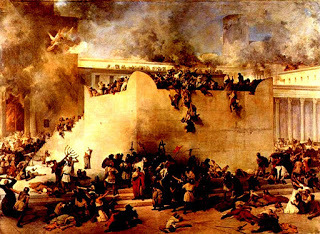
70 the destruction of the Second Temple in Jerusalem by the Romans.

1181 Supernova was seen in Cassiopeia, a constellation in the northern sky, named after the vain Queen Cassiopeia in Greek mythology, who boasted about her unrivalled beauty.
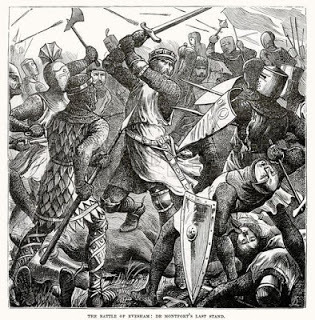
1265 Second Barons' War: Battle of Evesham: the army of Prince Edward (the future king Edward I of England) defeated the forces of rebellious barons led by Simon de Montfort, 6th Earl of Leicester, killing de Montfort and many of his allies.

70 the destruction of the Second Temple in Jerusalem by the Romans.

1181 Supernova was seen in Cassiopeia, a constellation in the northern sky, named after the vain Queen Cassiopeia in Greek mythology, who boasted about her unrivalled beauty.

1265 Second Barons' War: Battle of Evesham: the army of Prince Edward (the future king Edward I of England) defeated the forces of rebellious barons led by Simon de Montfort, 6th Earl of Leicester, killing de Montfort and many of his allies.
Published on August 04, 2015 01:30
August 3, 2015
5 facts about… Pompeii
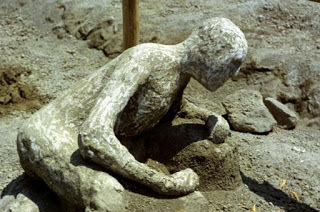
The solidified remains of a person killed in Pompeii (© Art Media/Print Collector/Getty Images)
In AD 79, the people of Pompeii felt rumblings from the nearby mountain of Vesuvius, but they couldn’t have imagined what would happen next…
In one of the worst natural disasters in European history, the sleeping volcano Vesuvius woke up with a bang on 24 August and destroyed Pompeii, killing its people and burying everything under tons of ash.
Pompeii was lost for centuries, before being found in the late 16th century.
Since then, archaeological digs have uncovered many of Pompeii’s mysteries, but there is still much we don’t know. Here are 5 things that have been revealed about the Roman town scorched into history...
1) ANCIENT GRAFFITI
Preserved on some of the walls were pieces of graffiti scrawled by the residents, giving clues to how the people of Pompeii lived. One found inscribed in the Basilica bemoaned the state of his host, remarking that “The Man I am having dinner with is a barbarian.” A crude confession was also discovered in the Inn of the Mule drivers: “We have wet the bed, host. I confess we have done wrong. If you want to know why, there was no chamberpot.”
2) FANCY A TAKEAWAY?
The citizens of Pompeii were fans of exotic takeaways. One of the scraps found in a drain was that of a butchered leg joint of a giraffe.
3) MOUSE MORSELS
A popular delicacy in Pompeii was dormice, reared in terracotta pots, disembowelled, stuffed and roasted.
4) STAYING PRETTY
Women used a strange range of beauty products, such as a face cream made from lentils, honey, deer antler and iris bulbs. Slaves also used pigeon dung and vinegar in an attempt to fade their branding marks of servitude.
5) EROTIC SCANDAL
In 1819, King Francis I of Naples visited the Pompeii exhibition with his wife and daughter. To his consternation, there was a series of erotic artwork on show. He demanded that this be locked away in a secret cabinet, only available to view for those of a “mature age and respected morals”. In 2000, these pieces were put on permanent public display.
Explore the eruption of Vesuvius and the destruction of Pompeii in the August issue of History Revealed – available in print and for digital devices.
History Extra
Published on August 03, 2015 06:23
History Trivia - Louis III of France defeats the Vikings
August 3
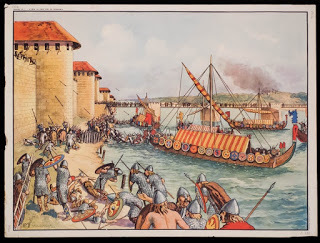
881 Battle of Saucourt-en-Vimeu: Louis III of France defeated the Vikings, an event celebrated in the German poem Ludwigslied.
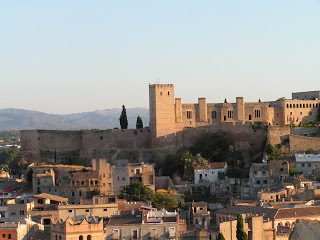
1291 the Crusaders abandoned Tortosa (province of Tarragona, in Catalonia, Spain) to the Moslems.
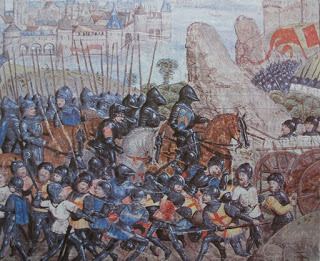
1347 Six burghers of the surrounded French city of Calais surrendered to Edward III of England, hoping to relieve the siege.

881 Battle of Saucourt-en-Vimeu: Louis III of France defeated the Vikings, an event celebrated in the German poem Ludwigslied.

1291 the Crusaders abandoned Tortosa (province of Tarragona, in Catalonia, Spain) to the Moslems.

1347 Six burghers of the surrounded French city of Calais surrendered to Edward III of England, hoping to relieve the siege.
Published on August 03, 2015 01:30
August 2, 2015
Archaeologists Search for Neolithic Home of Avebury Stone Circle Builders Between the Monuments
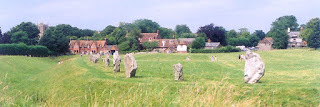 Ancient Origins
Ancient OriginsArchaeologists from the National Trust, Southampton and Leicester Universities, and Allen Environmental Archaeology are trying to find out where the people who built the world-famous Avebury Stone Circle in Wiltshire actually lived.
The stone circle at Avebury surrounds the center of the village and two smaller circles stand within the main ring of sarsen stones, one to the North, alongside the road to Swindon and the other to the south, next to the road to Devizes.
The monument, along with its famous neighbor, Stonehenge, is a World Heritage Site. It was constructed over many centuries, from around 2850 BC to 2200 BC with a huge bank and ditch surrounding the stone circle.
The archaeologists are currently exploring a site that was first investigated by Alexander Keiller in 1934. There are many Neolithic stone tools and pottery found just below the surface and experts are now engaged in a three-week dig, having first thoroughly explored the area over the course of the last three years.
Henge of the World Ancient Earthworks of North America suggest pre-Columbian European contact 4,400-year-old ruins found near ceremonial site may be the oldest house ever found in Britain “Avebury's prehistoric monuments are justly world famous but one of the questions I'm most often asked is where the people who built and used them lived” said Nick Snashall, speaking to The Western Daily Press. Mr. Snashall is The National Trust's archaeologist for Stonehenge and Avebury. “This landscape has been studied by antiquaries and archaeologists for almost 400 years, which makes it all the more astonishing that we had no idea where its Neolithic and Bronze Age residents lived or what they did in their daily lives. So a few years ago a group of us decided it was about time we changed that and teamed up to form the Between the Monuments Project.”
Snashall said that the team is trying to “put the people back into Avebury”. However, one of the main problems with this kind of work is that it is incredibly difficult to locate the houses the first farmers in the area built, whereas finding stone circles and burial mounds is comparably easy.
The team started by investigating the records assembled by Alexander Keiller and currently held at the Avebury Museum. This led them to a site near West Kennet, where a well-known ‘long barrow’ chambered tomb stands on a small hill – a regular stopping-off point for visitors to Avebury. Close to the barrow stands Europe’s largest man-made hill, a huge earthen mound called Silbury Hill and there is another long barrow at East Kennet.

West Kennet Long Barrow, Avebury, Wiltshire, England ( Wikimedia Commons )A double row of sarsen stones called the West Kennet Avenue connects West Kennet long barrow with the stone circle and the spot where the team are digging is located part of the way along this avenue, hence the name of the project - ‘Between The Monuments’.
When the archaeologists stripped back the turf, they found plenty of arrowheads, clusters of flint scrapers used to work animal hide and plant materials, miniature flint saws and pottery. Mr Snashall said that the finds were appearing three or four at a time, in clusters, and that its amazing to think about the millions of people who have visited the site yet had no idea what they were standing on.
The Druids Path to Ancient Ireland & Britain The Ring of Brodgar, the Neolithic Henge of Orkney Island The Ring of Brodgar, the Neolithic Henge of Orkney Island The Mystery of Stonehenge, Ancient Petroglyphs and Crop Circles The team has also discovered a structure which they think may have been an ancient house.
Scottish archaeologist and businessman Alexander Keiller was heir to his family’s marmalade business, James Keiller & Son, and so he became a very wealthy man. He used part of his inheritance to buy land totaling 950 acres (3.8 square kilometers) in Avebury where he then began to conduct excavations, including re-erecting some of the stones which had fallen over time or had become buried.
After investigating the West Kennet avenue site in 1934, he then moved on to Avebury itself in 1937. It was Keiller who discovered the famous ‘barber surgeon’ skeleton in the stone circle’s south west quadrant. In 1938 Keiller opened a museum at Avebury to display his discoveries, including artifacts he had uncovered at another site at nearby Windmill Hill. Keiller sold all his holdings in Avebury to The National Trust in 1943. The museum is still open to visitors to this day.
 'Barber Surgeon' skeleton, Avebury, Wiltshire, England (
Wikimedia Commons
)Featured Image: Avebury Stone Circle, Wiltshire, England (
Wikimedia Commons
)
'Barber Surgeon' skeleton, Avebury, Wiltshire, England (
Wikimedia Commons
)Featured Image: Avebury Stone Circle, Wiltshire, England (
Wikimedia Commons
)By Robin Whitlock
Published on August 02, 2015 07:07
Mr. Chuckles bumped into LA Punk Rocker, Brenda Perlin, while stirring the Wizard's Cauldron
 The Wizard speaks:
The Wizard speaks:Brenda Perlin is as big a friend of The Wizard''s Cauldron as there is. This will be the third time we've met around the magic bucket and as far as I am concerned, she can visit whenever she likes.
Author of the popular Shattered Reality trilogy, prodigious reviewer, massive indie supporter and, lately, reader for hundreds of US authors, Brenda's workload is a heavy one. Her reading list fills with trepidation and she actually reads the books in detail, which, in a social network environment where skimming a book is more of a survival strategy than a choice, is something to be applauded.
Recently, Brenda compiled a terrific little anthology about her life as a punk on the streets in Los Angeles in the early eighties. It's called LA Punk Rocker and I picked up the Wizphone to talk to her about it. Here's what she had to say.
New readers can find Brenda's previous interviews here on the Wizard's Cauldron where she talks about her well known "faction" Shattered Reality" trilogy and her anti-bullying story, Ty The Bull.
Click on this link to read the entire interview
Published on August 02, 2015 05:19
History Trivia - veni, vidi, vici
August 2
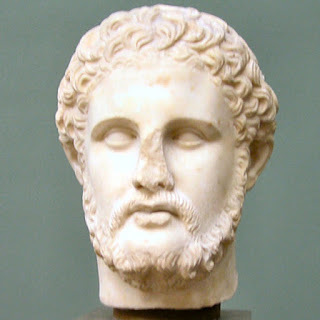
338 BC A Macedonian army led by Philip II defeated the combined forces of Athens and Thebes in the Battle of Chaeronea, securing Macedonian hegemony in Greece and the Aegean.
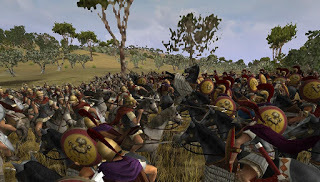
216 BC Second Punic War: Battle of Cannae – The Carthaginian army lead by Hannibal and his elephants defeated a numerically superior Roman army under command of consuls Lucius Aemilius Paullus and Gaius Terentius Varro, killing 60,000.
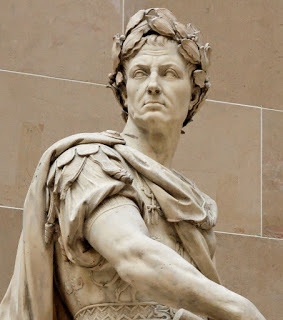
47 BC Julius Caesar said "veni, vidi, vici" (I came, I saw, I conquered) after defeating Pharnaces, King of Pontus (northeast Turkey).

338 BC A Macedonian army led by Philip II defeated the combined forces of Athens and Thebes in the Battle of Chaeronea, securing Macedonian hegemony in Greece and the Aegean.

216 BC Second Punic War: Battle of Cannae – The Carthaginian army lead by Hannibal and his elephants defeated a numerically superior Roman army under command of consuls Lucius Aemilius Paullus and Gaius Terentius Varro, killing 60,000.

47 BC Julius Caesar said "veni, vidi, vici" (I came, I saw, I conquered) after defeating Pharnaces, King of Pontus (northeast Turkey).
Published on August 02, 2015 02:00
August 1, 2015
History Trivia - Octavian enters Alexandria, Egypt,
August 1

30 BC – Octavian (later known as Augustus) entered Alexandria, Egypt, bringing it under the control of the Roman Republic.
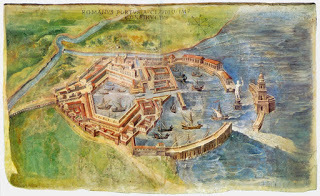
10 BC, Claudius I, Emperor of Rome AD 41-54 was born. He built Rome's harbor at Ostia and conquered parts of England and Thrace (the Balkins).
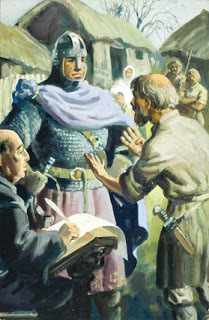
1086 - Results of the Domesday inquiry presented to William the Conqueror in Salisbury (the date of compilation and the Great Domesday are historically contestable).

30 BC – Octavian (later known as Augustus) entered Alexandria, Egypt, bringing it under the control of the Roman Republic.

10 BC, Claudius I, Emperor of Rome AD 41-54 was born. He built Rome's harbor at Ostia and conquered parts of England and Thrace (the Balkins).

1086 - Results of the Domesday inquiry presented to William the Conqueror in Salisbury (the date of compilation and the Great Domesday are historically contestable).
Published on August 01, 2015 02:00
July 31, 2015
Medieval mass grave lay hidden just two feet below a college in Scotland
Ancient Origins
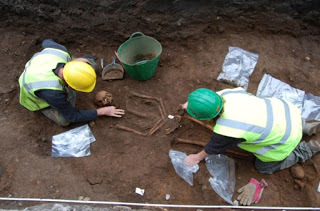 A mass grave with 25 bodies from the Medieval era is being excavated “just a couple of feet below” on the grounds of a private college in Aberdeen, Scotland. The bodies, some from the 13th century, were discovered when workers were digging in the yard, where students and faculty walked daily for many decades since the college was founded in the 18th century.
A mass grave with 25 bodies from the Medieval era is being excavated “just a couple of feet below” on the grounds of a private college in Aberdeen, Scotland. The bodies, some from the 13th century, were discovered when workers were digging in the yard, where students and faculty walked daily for many decades since the college was founded in the 18th century.
Robert Gordon's College is on the site of an abbey that Catholic friars were forced to abandon during the 16th century Scottish Reformation. A historian says the people buried there were probably elite members of society because they were interred in sacred ground.
“The bones were buried less than two feet underground in the quad area of the site and are now being examined by experts with a view to being reburied,” reports The Scotsman online. “Robert Gordon University, in Aberdeen, ordered the boiler work—but the skeletons were discovered in the grounds of the neighboring private school Robert Gordon College. Contractors installing cables found the first skeleton near Schoolhill main library and called in Aberdeenshire Council archaeologists to carry out further excavations in the area. It is believed the skeletons are of people laid to rest on the site of the former Blackfriars Abbey during the 13th century.”
 Robert Gordon's College (Photo by AbedeenBill /
Wikimedia Commons
)Historians believe Alexander II founded the abbey between 1230 and 1249. Religious reformers destroyed it in 1560. The site was granted to George, Earl Marischal in 1587. It became the site of Schoolhill when it opened as a college in 1750.
Robert Gordon's College (Photo by AbedeenBill /
Wikimedia Commons
)Historians believe Alexander II founded the abbey between 1230 and 1249. Religious reformers destroyed it in 1560. The site was granted to George, Earl Marischal in 1587. It became the site of Schoolhill when it opened as a college in 1750.
A local historian, Diane Morgan, said the Protestant Reformation forced Catholics to abandon the abbey, which was then left to go to ruin. Friars from both Blackfriars Abbey and the Greyfriars abbey were exiled from Aberdeen. “This find is very interesting and in the 13th century people could pay money to be buried on sanctified grounds. This could mean the people were privileged,” she said.
The Scottish Reformation, part of the larger Reformation sweeping Europe at the time in rebellion to the Catholic Church's corruption, rallied some of the most powerful sections of Scotland's society to the cause of Protestantism. Major figures in the Scottish Reformation included John Knox and George Wishart, who recruited influential people to the movement, says the Scottish Historic Society website. Through their efforts Protestantism replaced Catholicism as Scotland's primary religion. Centuries before, Catholicism replaced the Celtic and Druidic religions in Scotland and the rest of the British Isles.
 Scottish reformer John Knox (
Wikimedia Commons
)The website says the Reformation movement was just as much a political rebellion as a religious one. The nobility rebelled against Mary of Guise, mother of Queen Mary and the regent of Scotland in the late 1550s. The nobility wanted to align more toward Protestant England and move Scotland away from its long-standing relationship with Catholic France.
Scottish reformer John Knox (
Wikimedia Commons
)The website says the Reformation movement was just as much a political rebellion as a religious one. The nobility rebelled against Mary of Guise, mother of Queen Mary and the regent of Scotland in the late 1550s. The nobility wanted to align more toward Protestant England and move Scotland away from its long-standing relationship with Catholic France.
The ejection of friars from monasteries, abbeys and friaries came about January 1, 1559, when rebels posted The Beggars' Summons on the doors of Catholic religious buildings and threatened violence if clerics didn't leave. The notice was addressed in the name of the “blind, crooked, bed-ridden, widows, orphans and poor of Scotland” and said:
Featured image: Archaeologists exhume a body from the quadrangle of Robert Gordon College in Aberdeen, Scotland. (HEMEDIA photo)
By Mark Miller
 A mass grave with 25 bodies from the Medieval era is being excavated “just a couple of feet below” on the grounds of a private college in Aberdeen, Scotland. The bodies, some from the 13th century, were discovered when workers were digging in the yard, where students and faculty walked daily for many decades since the college was founded in the 18th century.
A mass grave with 25 bodies from the Medieval era is being excavated “just a couple of feet below” on the grounds of a private college in Aberdeen, Scotland. The bodies, some from the 13th century, were discovered when workers were digging in the yard, where students and faculty walked daily for many decades since the college was founded in the 18th century.Robert Gordon's College is on the site of an abbey that Catholic friars were forced to abandon during the 16th century Scottish Reformation. A historian says the people buried there were probably elite members of society because they were interred in sacred ground.
“The bones were buried less than two feet underground in the quad area of the site and are now being examined by experts with a view to being reburied,” reports The Scotsman online. “Robert Gordon University, in Aberdeen, ordered the boiler work—but the skeletons were discovered in the grounds of the neighboring private school Robert Gordon College. Contractors installing cables found the first skeleton near Schoolhill main library and called in Aberdeenshire Council archaeologists to carry out further excavations in the area. It is believed the skeletons are of people laid to rest on the site of the former Blackfriars Abbey during the 13th century.”
 Robert Gordon's College (Photo by AbedeenBill /
Wikimedia Commons
)Historians believe Alexander II founded the abbey between 1230 and 1249. Religious reformers destroyed it in 1560. The site was granted to George, Earl Marischal in 1587. It became the site of Schoolhill when it opened as a college in 1750.
Robert Gordon's College (Photo by AbedeenBill /
Wikimedia Commons
)Historians believe Alexander II founded the abbey between 1230 and 1249. Religious reformers destroyed it in 1560. The site was granted to George, Earl Marischal in 1587. It became the site of Schoolhill when it opened as a college in 1750.A local historian, Diane Morgan, said the Protestant Reformation forced Catholics to abandon the abbey, which was then left to go to ruin. Friars from both Blackfriars Abbey and the Greyfriars abbey were exiled from Aberdeen. “This find is very interesting and in the 13th century people could pay money to be buried on sanctified grounds. This could mean the people were privileged,” she said.
The Scottish Reformation, part of the larger Reformation sweeping Europe at the time in rebellion to the Catholic Church's corruption, rallied some of the most powerful sections of Scotland's society to the cause of Protestantism. Major figures in the Scottish Reformation included John Knox and George Wishart, who recruited influential people to the movement, says the Scottish Historic Society website. Through their efforts Protestantism replaced Catholicism as Scotland's primary religion. Centuries before, Catholicism replaced the Celtic and Druidic religions in Scotland and the rest of the British Isles.
 Scottish reformer John Knox (
Wikimedia Commons
)The website says the Reformation movement was just as much a political rebellion as a religious one. The nobility rebelled against Mary of Guise, mother of Queen Mary and the regent of Scotland in the late 1550s. The nobility wanted to align more toward Protestant England and move Scotland away from its long-standing relationship with Catholic France.
Scottish reformer John Knox (
Wikimedia Commons
)The website says the Reformation movement was just as much a political rebellion as a religious one. The nobility rebelled against Mary of Guise, mother of Queen Mary and the regent of Scotland in the late 1550s. The nobility wanted to align more toward Protestant England and move Scotland away from its long-standing relationship with Catholic France.The ejection of friars from monasteries, abbeys and friaries came about January 1, 1559, when rebels posted The Beggars' Summons on the doors of Catholic religious buildings and threatened violence if clerics didn't leave. The notice was addressed in the name of the “blind, crooked, bed-ridden, widows, orphans and poor of Scotland” and said:
Ye your selfes ar not ignorant (and thocht ye wald be) it is now (thankes to God) knawen to the haill warlde…that the benignitie or almes of all Christian people perteynis to us allanerly; quhilk ye, being hale of bodye, stark, sturdye, and abill to wyrk…hes thire many yeiris…maist falslie stowin fra us…[we] warne yow, in the name of the grit God, be this publyck wryting, affixt on your yettis quhair ye now dwell, that ye remove fourth of our saidis Hospitales, betuix this and the Feist of Witsunday next, sua that we…may enter and tak posessioun of our said patrimony, and eject yow utterlie fourth of the same.Michael Maitland, facilities manager for Robert Gordon's College, called the mass grave a major find. “Contractors basically were working to install lines and lay cables when they made the discovery,” he told The Scotsman. “They were using a mechanical digger and with the first scrape, about 300 millimeters [11.8 inches] below ground, they found a skeleton. The first one was near the Schoolhill main library and we called the council archaeologists. They went on to find about 25 from around the 13th century, according to the archaeologists. They were saying they consider it to be quite a major discovery that they believe is tied to the old Blackfriars Abbey on the site. I’ve worked here 25 years and I never imagined there was all this just a couple of feet below me. It’s fascinating.”
Featured image: Archaeologists exhume a body from the quadrangle of Robert Gordon College in Aberdeen, Scotland. (HEMEDIA photo)
By Mark Miller
Published on July 31, 2015 16:51
Not just about the booty: New study sheds light on reasons for Viking raids
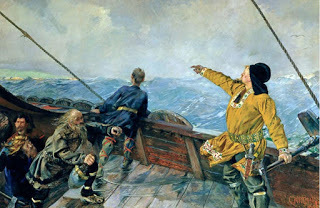 Ancient Origins
Ancient OriginsThe lure of the [Viking] raid was… more than booty; it was about winning and preserving power through the enchantment of travel and the doing of deeds.
Thus states a new paper by an archaeologists from the University of York, England, who has been trying to figure out just why, besides riches, the Vikings carried out the raids and conquests that they did.
“This provides an important correction to models that focus on the need for portable wealth; the act of acquiring silver was as important as the silver itself,” writes Professor Steven Ashby in the journal Archaeological Dialogues (the abstract is here).
The Vikings went on raids and set up colonies in England, mainland Europe and as far east as Russia. They went on voyages of thousands of kilometers to Iceland, Greenland, and Canada. The Viking Age lasted from the 9th to the 13th centuries AD.
“The cause of the Viking Age is one of our longest-lived debates,” Ashby writes. “A combination of push and pull factors and a catalysing environment instigated the late 8th-century escalation in maritime activity that ultimately led to social, political and religious transformation. Recent discussions have focused on the macro level, with little consideration of the individual gains to be made by raiding. This paper argues that rewards consisted in more than portable wealth. In the flexible hierarchies of the Viking Age, those who took advantage of opportunities to enhance their social capital stood to gain significantly.”Ashby wanted to research the social reasons for the raids. The riches Vikings gained were an obvious lure, but what else would cause a man to leave his family and home sometimes for months at a time and put himself in grave danger of being lost at sea or wounded or even killed in battle? Previous research looked at political, demographic, technological and environmental reasons for Viking raids, in addition to the real wealth of silver and slaves, says a synopsis of Ashby's article in Past Horizons. Also, why did silver and other riches and slaves become important in Scandinavian society from the end of the 8th century AD onwards?
 Territories and voyages of the Vikings (Wikipedia)
Territories and voyages of the Vikings (Wikipedia)“I wanted to try to discover what would make a young chieftain invest in the time and resources for such a risky venture. And what were the motives of his crew?” Ashby told Past Horizons. “The lure of the exotic, of the world beyond the horizon, was an important factor. Classic anthropology has shown that the mystique of the exotic is a powerful force, and something that leaders and people of influence often use to prop up their power base. It is not difficult to see how this would have worked in the Viking Age.”Acquisition of precious metals, especially silver and Anglo, Frankish and Celtic metalwork were tangible symbols of power and status and a mustering focus for more Viking raids. “Many of the large quantity of Christian artefacts found in Scandinavian contexts (particularly Norwegian pagan burials) escaped melting and recycling, not because of some form of artistic appreciation, but because they were foundation stones for power, and touchstones in any argument for undertaking military activity,” says Past Horizons.
 Prow of a Viking ship in a museum in Oslo, Norway (Photo by Karamell/
Wikimedia Commons
)Ashby said raids gave Viking rank and file men opportunities for violence and also a venue to gain notoriety among peers and the chiefs. “It was an opportunity to build reputations for skill, reliability, cunning, or courage. Just as leaders of raiding parties stood to gain more than portable wealth, so too their followers could seek intangible social capital from participation,” Past Horizons says.
Prow of a Viking ship in a museum in Oslo, Norway (Photo by Karamell/
Wikimedia Commons
)Ashby said raids gave Viking rank and file men opportunities for violence and also a venue to gain notoriety among peers and the chiefs. “It was an opportunity to build reputations for skill, reliability, cunning, or courage. Just as leaders of raiding parties stood to gain more than portable wealth, so too their followers could seek intangible social capital from participation,” Past Horizons says.Featured image: Leif Ericson discovers Vinland, by Christian Krohg. (Wikimedia Commons)
By Mark Miller
Published on July 31, 2015 16:45




